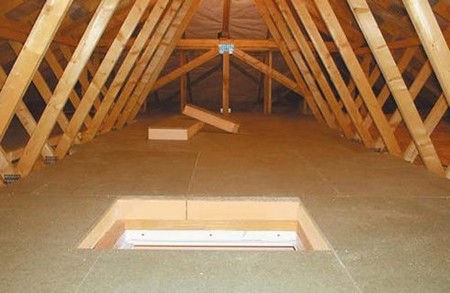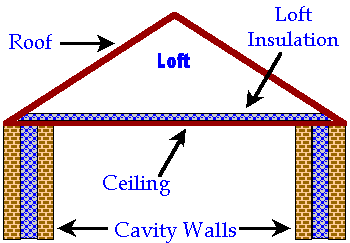The main objective of improving insulation is usually to reduce fuel bills. Therefore, it is important to compare the cost of installing the insulation with the likely savings to work out whether it is cost-effective compared with, say, putting the same amount of money in a building society. Insulation does, of course, have other benefits notably increasing comfort and reducing condensation. Loft insulation should pay for itself within two years. You may want to check out this plastering contractor melbourne here for a professionally installed insulation that can provide better temperature control and higher energy efficiency for your home.
Although more heat will be lost through the walls in most houses, the roof is the first place to start. It is possible to put spray foam insulation on the underside of the roof itself, but unless you intend to use the loft space for an extra room, it is usual to add the insulation to the floor of the loft. The two main kinds of loft insulation are blanket and loose-fill. If you need any professional help with your home insulation, search the web and type in the keyword “insulation near me” to find a reliable service in your area.

Blanket insulation
Blanket materials are sold in rolls which are usually 400mm wide. The two main materials used are glass fibre and mineral wool. Laying the roll is quite simple: you place the roll between two joists and unroll it. The tricky bit is getting it up in the loft space to start with. The roll is slightly wider than most modern joist spacing -you let it curl slightly up the sides. Some old houses have joists somewhat closer together – so unless you can get wider rolls (1.2m widths are sold) and cut them up with a panel saw, you will have a much greater overlap. An alternative is to lay it across the joists. Blanket materials are sold in 100mm and 150mm thicknesses. It is probably worth fitting the greater thickness if fuel prices continue to rise -but it will come above the level of the ceiling joists which will make the loft less easy to use for storage.
Before laying loft insulation, check that there is adequate ventilation into the loft to prevent condensation on the rafters (there should be the equivalent of 10mm all round): if necessary drill holes in the soffits or fit soffit ventilators.
Laying blanket insulation is hard and dirty work and the insulation itself can irritate the skin: wear a simple face mask and rubber gloves. It’s best to hire Vancouver spray foam contractors to do the job for you. The blanket can be used to insulate the top and sides of cold; water tanks if they are not already insulated, but insulation should not be laid under the tank. The loft space will be colder when it is insulated and the heat coming through the ceiling under the tank will help prevent it freezing in cold weather. Otherwise blanket should be laid on all exposed floor space right up to the caves (but space at the caves should be left for ventilation).
Make sure that all water pipes in the loft space are well insulated, and seal around any holes in the ceiling where pipes or cables pass down into the house. Do not forget to insulate and draught-proof the loft hatch.
Loose-fill materials
The most common d-i-y loose-fill material is vermiculite, though it is possible to get loose-lay mineral wool loft insulation. Loose-fill materials are sold in bags and you empty out the bag between the joists, spreading the fill out to the depth you want. The practical limit is the depth of the joists (usually 100mm). For vermiculite, this is equivalent to about 75mm of blanket insulation. Laying vermiculite takes longer than laying blanket and it can be dusty. You need to be careful at the edges of the loft to prevent the granules falling down the cavity in the walls. Loose-fill materials can blow about in the loft and may need some attention from lime to time. Learn more from roofing experts by checking this additional reading.

A more recent form of loose-fill insulation is cellulose fibre, which is usually blown in by an insulation contractor. Cellulose fibre is basically recycled paper and it is important that it has a fire-retardant added. This may be corrosive to exposed metal and may affect light fittings, so these should be protected. Loose-lay cellulose fibre and mineral wool are as effective as blanket insulation.
Local authority loft insulation grants may be available for some people who are on low incomes.